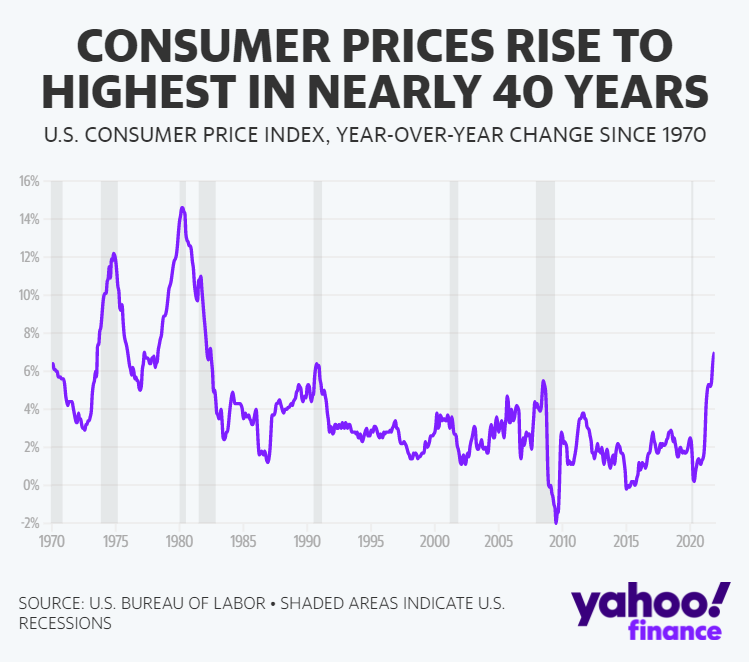U.S. stocks gained Thursday as investors considered afresh read on weekly unemployment claims and wholesale price inflation out of Washington.
The Labor Department's weekly jobless claims report showed an unexpected rise in first-time unemployment filings for last week, with these increasing to 230,000. Still, this remained near pre-pandemic levels, and continuing jobless claims improved to their lowest level since 1973. Meanwhile, the Bureau of Labor Statistics' December producer price index (PPI) showed a 9.7% year-over-year increase in wholesale prices for the end of 2021, marking the biggest jump on record in data going back to 2010.
Investors also continued to digest a red-hot print on inflation in consumer prices from earlier this week. This showed another decades-high rate of price increases, one day after Federal Reserve Chair Jerome Powell indicated in his renomination testimony that the central bank would intervene as needed to ease rising prices. The Bureau of Labor Statistics' December Consumer Price Index (CPI)showed the cost of goods rose at a 7.0% year-over-year rate at the end of 2022 to mark the highest levels in four decades.
“I think the 7% print was largely priced in to the equity markets,” Comerica Wealth Management chief investment officer John Lynch told Yahoo Finance Live, though adding that we have “a little more to go” on CPI before it peaks.
Ian Shepherdson, chief economist at Pantheon Macroeconomics, shared a similar view that the rate of price increases could ease starting mid-this year, but CPI may reach 7.2% in January and February before it takes a subsides.
“The run of big increases is over, and it will start to fall in March," he wrote in a note, anticipating that September could see a print of 4.5%.
The Labor Department is scheduled to release its latest figures on weekly jobless claims before market open. Consensus economist forecasts indicate new filings for unemployment insurance will tick up slightly from the prior week but gold near pre-pandemic lows.
"Persistent high inflation rates together with the recent strong labor market data reinforce the hawkish narrative provided by the Fed,"Christian Scherrmann, DWS Group U.S. economist, said in an email. "Looking ahead, Omicron looks set to dictate the fate of the economy in January and maybe in February, but current indications on how the new variant plays out suggest that the Fed will remain on track to reduce its accommodative monetary policy, most likely as early as in March this year, by hiking rates for the first time since December 2018."
To close out the week, banks are scheduled to report fourth quarter results on Friday as earnings season kicks off. The S&P 500 Financials sector exchange-trade fundXLFset a fresh record intraday high again on Wednesday, marking its fourth record in the eight trading days so far in 2022 as investors gear up for quarterly reports from BlackRock (BLK), Citigroup (C), JPMorgan Chase (JPM), and Wells Fargo (WFC).

Comments